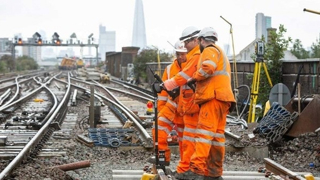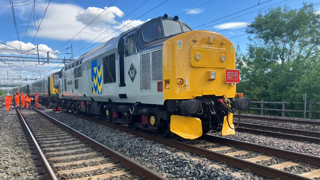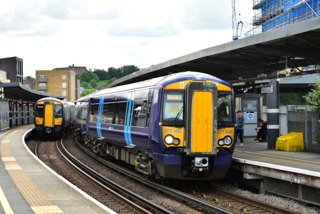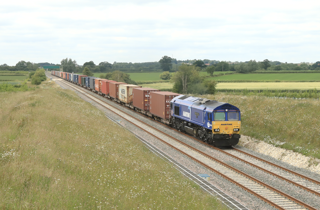SHORT-TERM EFFECTS
Investment in long-term infrastructure has become more important, not less, according to the Government. Yet on better surface access to the UK’s airports, it has been less than enthusiastic.
This is odd. Superior road and rail links to the country’s main population centres was a factor in choosing Heathrow over Gatwick for the first new runway in the South East for 70 years.
But Heathrow’s Western Rail Link (see map, below), planned for 2021, will not happen until at least 2024. And the long-sought southern rail link remains no more than a vague aspiration.
A new study by the Airport Operators Association (AOA) claims that a 5% improvement in average journey times to and from airports would deliver a 2.7% increase in passenger numbers, generating an additional £1.9 billion a year for the UK economy and supporting 32,000 more jobs.
It points out that most road and rail access to most airports will have reached maximum capacity by 2030. As planning new infrastructure takes a decade or more, the Government should already be looking beyond that horizon.
The aviation industry creates £52bn a year and supports around one million UK jobs. In 2015, 251 million passengers flew from UK airports, an increase of 5.6% over the year before. It is likely that several airports will reach their capacity more quickly than was anticipated even five years ago. Gatwick was predicted to reach 40 million passengers a year in ten years’ time - it reached that landmark a few months ago.
The impact of airport links is clear. Take the rebuilt Reading station, planned as the centerpiece of substantial town centre regeneration. New buildings within walking distance of the station will be filled by businesses and people specifically because of direct trains to Heathrow, according to council cabinet member Tony Page.
The arrival of Crossrail from 2018 and more frequent new Hitachi trains to Paddington will generate substantial traffic. But Page says it is the new tracks from Langley to the platform space already built for the job beneath Terminal 5 that will drive the inward investment Reading craves. Proximity to Heathrow is what matters most, and central Reading will be 26 minutes from the departure gate, instead of more than an hour away by train.
On the South Coast, Southampton Airport expects to reach two million passengers for the first time in 2017. It trades heavily on being a one-minute covered stroll away from frequent South West Trains services to Waterloo.
This compact and efficient regional airport, with dozens of UK and European connections, has long benefited from faster, hassle-free surface access than Heathrow and Gatwick. It counts most of south London as comfortably within its one-hour catchment. It advertises long-haul links via Amsterdam and Paris as direct competition with its much larger neighbours, citing easy rail access as a key advantage.
The AOA argues that improved road and rail access generates economic activity that would not otherwise occur - tourism, international trade, productivity improvements and foreign investment. This then supports a range of economic activity down the supply chain - for example, Heathrow’s biggest freight export is Scottish smoked salmon.
The AOA is calling for new thinking on the way transport links are appraised, because current Department for Transport guidance understates the benefits from surface access work - it fails to take into account gains from trade, tourism, migration and foreign investment.
There is no National Policy Statement on airports, although a new aviation strategy is expected in 2017. During the lengthy runway debate, the aviation industry frequently complained that the Government does not have a national strategy for planning airports and the connectivity to their catchment areas.
The DfT’s Aviation Policy Framework, published in 2013, states that developers (usually airports) must pay the costs of upgrading or enhancing road, rail or other transport networks. The Government will only consider public funding where there are a wider range of beneficiaries.
Clearly around Heathrow it would be unreasonable for the airport to entirely fund massive changes to the M25, a link to HS2, the link to the Great Western, and a southern connection to Waterloo via Staines. The impact on aircraft landing fees, and therefore on air fares, would not be viable.
But investing in surface access can promote a shift towards public transport, benefiting passengers, airport workers and local businesses. This in turn benefits the local environment. At Heathrow, one-third of the pollution comes from surface transport.
Since 2006, the percentage of passengers using public transport to access eight major airports - Heathrow, Gatwick, Stansted, Luton, London City, Manchester, Birmingham and East Midlands - has increased by 5.9%.
At the five main London airports 40% of passengers use public transport, a modest 3% modal shift in a decade. But outside London the figure drops dramatically. Only 23% of passengers at Birmingham arrive by public transport. At East Midlands only 7% arrive that way. At Bristol, Bournemouth and Exeter airports there are no rail links, so every passenger arrives by road.
A study by the Civil Aviation Authority found the cost and convenience of getting to an airport was a key factor for 55% of travellers, second only to the availability of preferred flight routes.
And a 2014 study by the DfT showed that four out of ten of the most congested rail services either start or terminate at an airport.
The opening of Crossrail will dramatically improve airport links in London. It will enable passengers to transfer between London City and Heathrow in under two hours for the first time.
Meanwhile, the Thameslink upgrade will greatly enhance Gatwick’s connectivity, both within London and for passengers travelling further north. In its failed campaign for a second runway, the airport claimed it would be “road and rail ready” before construction started. Users of the congested Brighton Main Line and the parallel M23 motorway disagreed.
Network Rail has said that airport passengers are often not the main source of pressure around airports, with non-airport-related passenger journeys having a much more significant impact on local infrastructure.
In a 2015 report into airport surface access (Surface transport to airports, First Report of Session 2015-16), the Transport Select Committee highlighted inadequate rail links as a major factor limiting airport growth. It pointed out that Luton’s lack of a direct rail connection explained why it had the lowest public transport share of any London airport.
Stansted
London Stansted served 25 million passengers in 2015, an increase of 40% since 2013. It has capacity for an additional 20 million passengers a year.
The airport sits on the West Anglia Main Line to Cambridge, an ecomomic area that has grown 65% faster than the national average since 2007. Yet 20% of passengers arriving by rail compares poorly with Heathrow and Gatwick. The airport states this affects its ability to attract a wider range of passengers and airlines. It says that a ten-minute reduction in journey time to London could be achieved within five years, with the right capital investment.
Edinburgh
The introduction in May 2014 of the tramway to Edinburgh Airport reversed a trend of declining public transport use. Before the tram started, 28% of passengers arrived by public transport. It has now risen to 31%. This has helped local roads to accommodate an increase in passenger numbers of more than one million over two years.
Newcastle
Newcastle Airport says the 1991 extension of the Tyne and Wear Metro to the airport shifted public transport modal share from 2% to today’s 16%.
Bristol
Bristol Airport has no rail access. And road links are poor - most travellers arrive through the centre of Bristol on the A38, and there is no direct route from the north, east or west. Despite carrying ten million passengers a year, it has the lowest public transport share of any major airport (just 14%).
Gatwick
At Gatwick, the airport claimed that 35%-40% of the benefits from expansion would flow to the local region. Business organisations were enthusiastic about the economic benefits -people who struggle on congested trains and on clogged local roads were less keen.
Gevin White operates a catering hire business with 20 staff on Crawley’s Manor Royal industrial estate, backing onto the Brighton Main Line on the airport perimeter.
“The problem is not in the skies, but down on the ground,” he says. “When my delivery people go into London they leave at 0430, because any later they get caught in the traffic. There are more housing estates being built all around, and the people who move here will probably be commuters into London.”
Andrew Gold runs Roband Electronics, an aerospace company in Charlwood, just beyond the end of Gatwick’s single runway. He employs 70 people.
“This is already an area of full employment with massive prosperity. It is hard to recruit staff because everyone round here who wants a job has already got one, and people won’t move here because of high house prices. So I’m not sure where all these claimed economic benefits will go.
“Very few people will actually gain from expansion. The trains are overcrowded and the roads are jammed every day - not so much with people going to the airport, but with local traffic serving all the businesses that are here because they want to be near Gatwick.
“Surely it would be better to put airport capacity further up the country where there is a demand for growth, a need for jobs, cheaper land.”
Airport access vs HS2
The AOA says increasing average journey speeds to airports by 5% would boost UK GDP by £1.9bn a year and support an extra 32,000 jobs.
It says that compares favourably with the first phase of HS2, which would support 22,000 jobs in the West Midlands and provide an annual £1.5bn boost to the economy. Overall, HS2 is expected to support 100,000 additional jobs.
The airport operators point to a range of studies that find a positive impact from higher levels of airport activity. They range from £20 to £170 of Gross Value Added for each extra passenger. GVA estimates for each additional employee range from £20,000 to £100,000.
The AOA wants the Government, with Network Rail and Highways England, to set out how it will make decisions about which airport access projects it will prioritise.
It says the National Infrastructure Commission, led by Sir John Armitt, should provide policy continuity over a long-term horizon, regardless of changes in Government. It says the NIC should also take into account the positive impact on UK inward tourism, valued at £22 billion a year, as this is currently ignored.
LONG-TERM EFFECTS

In opting for the third runway at Heathrow in October 2016, the Government stressed how this airport is better placed than Gatwick to deliver benefits across the nation as a whole, and not just for London and the South East.
This is true - Heathrow is better placed to serve the wider nation and not just London - but not for the reason given. A plan to use some of the additional runway capacity created to operate more short-haul air domestic routes to Heathrow could just as easily be applied to an expanded Gatwick.
What could and should have been said in Heathrow’s favour in serving the wider nation is that there is a unique opportunity to use existing and planned rail links to provide a wide set of direct rail services to the airport from across a very wide catchment.
Current rail connections at the airport are only to/from London. But it would be relatively straightforward to connect much of the rest of the country directly by rail to Heathrow. And once this is done, the opportunity exists to transform the rail network west of London - creating the opportunity for orbital as well as radial travel by rail, using Heathrow as a hub rail station.
We know from the success of direct rail services to Manchester Airport (from widespread locations such as Scotland, the North East, Yorkshire, the whole of the North West, and soon from North Wales, too) that these services have huge appeal and are a commercial success.
The emphasis on direct is important. Research by the Institute for Transport Studies at Leeds University (Demand for Rail Travel to and from Airports, W F Lythgoe and M Wardman) shows us that the need for an intermediate en route interchange dissuades many people from using rail as an access mode to the airport, with a loss of 37%-40% of rail demand.
We also know that Heathrow Airport’s international competitors enjoy direct rail services (including high-speed rail) - think of Amsterdam’s Schiphol, CDG at Paris, and Frankfurt.
An expanded Heathrow surely merits the equivalent. The new Western Rail Link to Heathrow (first developed as the ‘Western Connection’ 20 years ago) will link the Terminal 5 station to the Great Western Main Line between Iver and Langley. Reading-T5 journey times could be as short as 26 minutes. The project is on a timeline for completion (subject to powers and funding) by as early as 2024. As Network Rail’s publicity points out, this link could improve access to the airport from the South Coast, the South West, South Wales and the West Midlands.
The recent decision in favour of Runway 3 should, of course, strengthen the case for the Western Rail Link’s speedy implementation. With a protected below-ground route reservation westwards from T5, it needs to be progressed before works start on the new runway. And it provides ready access to the Heathrow Express depot that needs to be relocated away from Old Oak Common to accommodate HS2.
But a western link will not realise its full potential if its use is restricted to trains running to/from Reading only. It could be upgraded so that it can provide a regular direct service to Heathrow from each of Cornwall/Devon and Somerset, from South Wales and Bristol, from the West Midlands and Oxford, from the East Midlands using the new Bicester-Milton Keynes East West Rail link, and from Hampshire. As has been proven at Manchester, and as the Leeds/ITS research confirms, this means much bigger modal transfer to rail. It also means the creation of a set of services that would generate a net revenue premium from the rail sector.
A possible southern link for Heathrow was also mentioned by the Secretary of State for Transport, in announcing the third runway.
The risk with both of these new links is that they are designed around meeting only local access needs. Key champions have included Slough Borough Council for the western link, and Wandsworth Borough Council for the southern link. Of course, these links can and should meet the need of places located just five to ten miles from the airport - and no doubt in doing so this may help mitigate some local hostility to the third runway and the impacts of flight path noise.
But the country will continue to have only one major international hub airport, and access to its rich range of business destinations - as the Secretary of State for Transport has recognised - needs to be a national matter. Therefore, just as the western link can serve a wider market, so too can the southern - and this means Surrey and Sussex, not just southwest London.
At this point, it becomes clear what a rail hub at Heathrow - with these two new rail links and the existing connections to London (including the Piccadilly Line and Crossrail’s connections to London’s West End, the City, Docklands and North Kent/Essex) - could offer:
- A rail location to rival King’s Cross/St Pancras.
- The chance to provide a meaningful alternative to the M25.
- A single point west of London with 360˚ rail connectivity, near the M4/M25 interchange (where in the 1980s a modest parkway station was once considered).
- And, of course, direct rail connectivity to the nation’s major international airport from across southern England, South Wales and the Midlands.
It is time to move on from the debate around the value of Heathrow as an air hub, and recognise the value of Heathrow as a rail hub.
In the past, airport rail connections have sometimes been regarded as a planning gain for the airport, and with that approach have come obligations for airports to fund them. So HS2 Ltd contends as of now, for instance, that a station to serve Manchester Airport depends on local funding. This is really nonsensical.
Connecting the rail network to airports was the subject of an episode of Yes Minister - a blindingly obvious development to Minister Jim Hacker, but a subject that crossed departmental fault lines and thus a cause for excruciating obfuscation from Sir Humphrey.
We may be past that particular hurdle, but imposing funding obligations for mixed use surface access schemes on competing private sector airport owners remains problematic. Entirely different perspectives on the matter are held by the two regulators, ORR and the CAA.
The case for creating the necessary rail infrastructure west of London is not something to insist on the airport owner providing (although a contribution would be sensible), because the rich mix of M25-style rail journeys and benefits that a rail hub will bring come regardless of whether Heathrow gets a third runway or not. The funding mix needs to reflect this point.
It is important that development plans for the airport’s third runway do not inhibit the rational development of surface transport west of London, which will rely on a rail hub at Heathrow - especially because this facility could be crucial to proving the acceptability of the third runway proposal in terms of air quality.
On this subject, the Government statement on Heathrow’s third runway makes clear that final decisions will include conditions requiring the airport to meet both local air quality and road traffic congestion limits.
The detail of those conditions will be one of the matters covered in the consultation on the National Policy Statement, and also in the subsequent consideration of the detailed planning applications. If Government wants to give itself a good chance of negotiating the planning hurdles ahead, it would do well to initiate a strategic examination of the scope to develop the rail network at Heathrow in the way described.
It could do worse than re-read the review conducted by Lord Mawhinney on the question of how HS2 should best serve Heathrow (to which the answer was St Augustinian - yes, but not until later).
Published in July 2010, Lord Mawhinney concluded: “I judge it to be important that Heathrow should be made as accessible as possible by both high speed and traditional rail infrastructure. In my view this is more likely to take place if a staged building approach is adopted, in accordance with a pre-agreed master plan.”
In the past, incremental decisions on rail links as conditions of serial planning consents have created an inefficient rail infrastructure at Heathrow. The habit needs to be broken. Road traffic in the Heathrow area (including from the major motorways) creates around half of the air quality problem, and aviation contributes much of the balance. Of course, road vehicles and aircraft will become less polluting over time. But none can match the air quality standards that electrified rail brings.
Developing rail as a network west of London, with a hub station at Heathrow, requires the master planning that Lord Mawhinney called for. Indeed, it may be crucial for progress with the third runway. The National Infrastructure Commission should demand a rail master plan as a pre-requisite.
















Login to comment
Comments
No comments have been made yet.